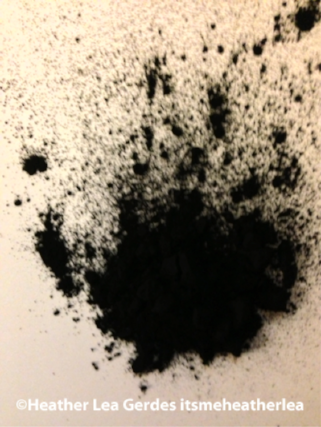This ain't no Rorschach Test! But artists and plants love the medium!
HERE WE GO!
This Ain't No Rorschach Test!
It Does What?
Ancient Greeks, Romans, Egyptians, and Native Americans Knew!
Professional charcoal burners were called colliers. These experts were often left alone to the task of charcoal creating. Before production scaled up, this delicate science began with simple conical stacked piles of wood that was then covered in turf or clay. Getting the rate of combustion (heat management) just right meant a successful yield. And yes, it was bad for the environment, emitting unburned methane and deforesting at alarming rates.
Charcoal’s carbonization changes depending on the temperature used to create it – only a few degrees determine whether the charcoal will be compressed and burn easily a become powder. Too high and the charcoal must reach an incredibly high temperature before it ignites, but at very high temperature metal becomes molten, so this product was widely used in blacksmith’s forges.
Used in industrial smelting and even gunpowder years ago, charcoal’s byproduct of wood tar in particular, saw demand that nearly wiped out forests in Central Europe. Modernized technology incorporates a recycling of heat during carbonization when gas is released during the process. The charcoal yield is higher and cleaner. Some documentation reports that even though charcoal production is mostly illegal, populations of some countries rely heavily on it as fuel for heating and cooking.
Common charcoal is made from wood, coconut shells, coal, peat, or petroleum. Activated charcoal is made by heating common charcoal (not the petroleum kind – and preferably charcoal derived from organic sources) at very high temperature in the presence of a gas that creates pores, which act as filters or traps to absorb a range of organic compounds in the air, in gas, or in liquids.
Charcoal was often referred to as black magic. Who knew? And Hippocrates, the Greek physician we credit as the father of natural medicine, used it as cures for many of his patients. Egyptians and Native Americans relied on it to rid parasites from the body.
A simple Internet search reveals online stores where you can purchase activated charcoal. Varieties of charcoal are often categorized: home, industrial, agricultural, medicinal. You can buy charcoal made from bamboo, coconut shells, hardwood, or lignite. When you purchase in bulk, you can further choose qualities of food grade, powder, pellet, granular, USP (quality testing) certified, and Biochar (green charcoal). The multitude of remedies range from purifying the air, controlling odor, filtering drinking water, detoxing soil, to keeping your fish happy in their tank home. A.C is very versatile and worth investigation.
I like: buyactivatedcharcoal.com
INGESTION:
Used as an emergency treatment for poisoning, activated charcoal also treats diarrhea, indigestion, gas, and a variety of ingested toxic drugs or chemicals. If the bad stuff is still inside the stomach or intestines, it adheres to the charcoal's surface, remaining in the G.I. tract until eliminated. Consult doctors or Poison Control before ingesting A.C. to treat poisoning or before any home use.
TOPICAL:
Used as a poultice, activated charcoal will draw bacteria and poison through the skin into the poultice. As long as the poultice is wet, it's still working. This remedy is relied on to treat insect bites and stings, rashes, poison ivy, infected wounds, even ear infections, or an abscessed tooth.
Speaking of teeth, some suggest using charcoal for teeth whitening! It will certainly combat mouth bacteria and odor, even if your mouth and teeth are temporarily black like The Walking Dead in the process.
Make a Poultice
- 2 T. activated charcoal powder
- 1/4 c. water (distilled)
- 2 T. ground flax seed
Mix charcoal and water. Add small amounts of the ground flax seed. (I use my coffee bean mill to grind the flax seed.) Continue adding the ground flax seed until the mixture becomes gelatinous, but not runny or stiff.
Spread the mix along the middle of the paper towel or porous cloth in a 3" row, leaving 1" on both sides.
Fold top down, then the right, the left, then the bottom up to fashion a poultice covering.
This natural remedy is definitely worth your research!
Enjoy!
~itsmeheatherlea


